| CODE UPDATE |
|
| Significant Code Changes to the 2012 International Building Code |
| (The information below is excerpted from the Significant Changes to the 2012 International Codes series.) |
|
Exits are now permitted to be arranged where they serve a portion of a story instead of requiring that all of the required exits from the story be accessible to all of the occupants. This exception recognizes that in some building arrangements an exit may serve a specific area, such as being within an individual tenant space and may not be useable by other occupants on this story. The previous requirement often resulted in designs where access was provided to every exit required from the story even though the exiting layout was such that certain exits served distinct portions of the story and those portions may have only required access to one or two exits based on the occupant load of that area.
Click to continue reading more on this update to the 2012 Significant Changes. |
|
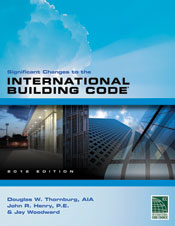  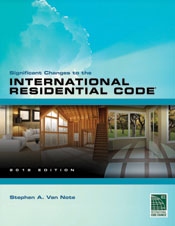  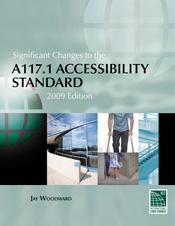 |
The Significant Changes to the 2012 International Codes series has been developed by the International Code Council and published by Cengage Learning to assist code officials, architects, engineers and other construction professionals transitioning from the 2009 to the 2012 editions of the International Codes. The series offers a comprehensive yet practical analysis of hundreds of the most critical changes from a very active code development cycle. Each color publication contains: revised code text; a summary of each change listed; in-depth change analysis; and a detailed photo, illustration or table for each change to deepen understanding. Coverage reflects provisions with special significance, including new and innovative design ideas and technologies, modern materials and methods of construction, and current approaches to safety and stability. Authored by ICC code experts, these useful tools are "must-have" guides to the many important changes in the 2012 International Codes. |
 |
| CODE BASICS |
|
| Residential, Based on the 2009 International Residential Code |
| (The information below is excerpted from the 2009 Building Code Basics series.) |
|
As part of the egress path and a component presenting increased hazard of fall injuries, stairway design and construction, including adequate illumination, is particularly important to safety in a dwelling.
Click to continue reading more on this excerpt from the Building Code Basics: Residential, Based on the 2009 IRC. |
|
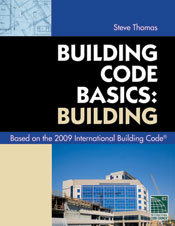 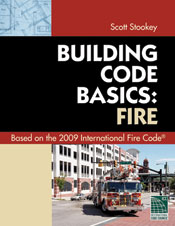 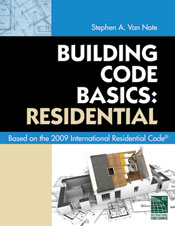  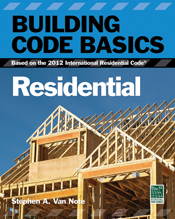 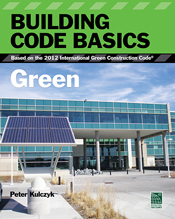 |
The Building Code Basics series based on the 2009 International Building, Residential and Fire Codes and 2012 Building, Residential and Green Construction Codes explains requirements using non-code language to help you understand the material or explain it to others. Technically accurate and easy to understand, these are the perfect resources for builders, owners, students, plan reviewers, inspectors and permit technicians. Each book contains: 150-plus color diagrams and photos that help readers visualize correct code application; numerous real-world examples; content that pulls together related information from various code sections into one convenient location; and a glossary of code and construction terms to clarify key terminology as it applies to the code. |
| CODE Q&A |
|
| 2009 International Plumbing Code |
| (The information below is excerpted from the 2009 International Codes Q&A series.) |
|
A question regarding hot water availability in Education Group E buildings in Section 607 is raised and answered:
Q: Is hot water required to all lavatories in the children’s restrooms of an elementary school even if the school district does not want hot water?
Click to get an answer to this code question and to continue reading more on this excerpt from the 2009 IPC, IMC and IFGC Q&A. |
|
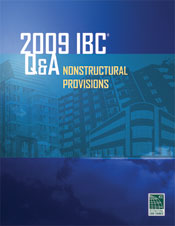 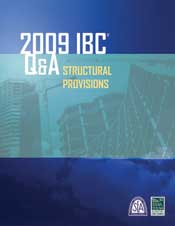 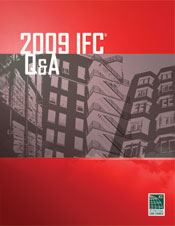 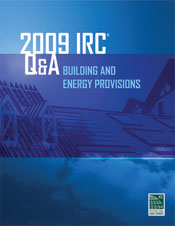 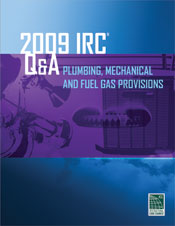 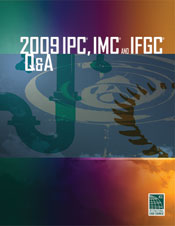 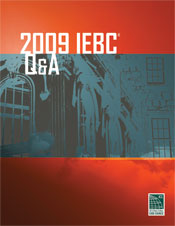 |
The 2009 Q&A series will assist engineers, architects, inspectors, fire and building officials, and plans examiners with finding answers to common code questions that arise during design, plan review, construction and daily code enforcement. Features: many new questions and answers; detailed photos, tables and illustrations that provide a clear understanding of both the intent and meaning of the code text; the relevant code section printed before the question and answer for easy reference; and discussion on a wide variety of topics. |























